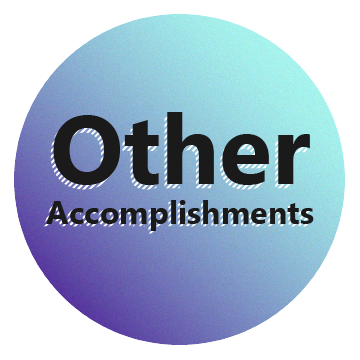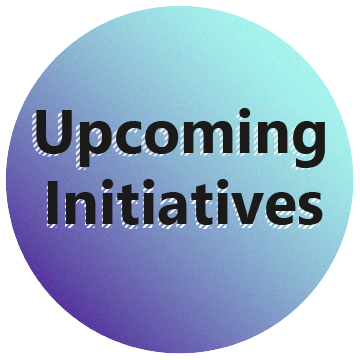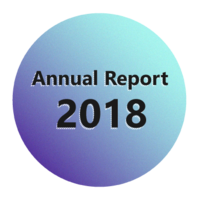A year in review
I’m pleased to share Information Systems & Technology's (IST) 2019 Annual Report. This report highlights a number of achievements from the past year and their impact on various areas of campus. Our work is varied, from protecting the University with physical security systems and advances in information security, to engaging the community through a campus IT review to help guide IT over the next decade. Other initiatives illustrate the importance of campus partnerships, such as our work with the Student Success Office on the Waterloo Passport system, and with Institutional Analysis & Planning (IAP) on the Data as a Strategic Resource Program.
I hope you enjoy the report. Thank you for your partnership, and for helping us deliver state of the art, people-centric IT services and solutions in support of the University mission.

Bruce Campbell
Chief Information Officer
Waterloo Passport Review

Reinventing our Student Mobility System
Partnering for student success
In 2018, the Student Success Office partnered with IST to review the Waterloo Passport system, a system that was meant to do a lot of things including managing international agreements, facilitating applications from inbound and outbound exchange students, and tracking exchange balances. However, at the time, it was not working well for stakeholders. A review of the business processes and system functionality determined that an overhaul of the application was needed.
In 2019, the team successfully completed the first full application cycle for 2019-2020 and were able to reflect upon the change made and found that Waterloo Passport could indeed facilitate the application process for outbound exchange students; help to manage quotas and track balances with our partner schools; and enable data analysis to make evidence-based decisions.
Enhancements
After implementing multi-choice system functionality last year, students were able to choose and rank up to five programs in one application. Analyzing that new data, the team found students rarely accepted a fifth-choice match so, for the current 2020-2021 application cycle, this has been tweaked so students are now only allowed to choose up to four program choices. The impact of this will be decreased administrative effort to match in addition to improving the availability of program spots for other students earlier on.
Last year, Document Library capability was used to post a spreadsheet of programs that still had spots available. However, this did not prevent students from applying to programs that were full. For this application cycle, the built-in Program Page functionality will be used to prevent students from applying to programs that met their quota, and just as easily allow students to apply if more spots open up, which can be done individually or in batch. The impact of this will be decreased administrative effort to look at invalid applications and less back and forth with the student.
Looking ahead
The team would like to expand use of the Document Library functionality to streamline the outbound nomination process and implement the new Inbound Nomination functionality in Waterloo Passport to remove the requirement to manually update a separate webform.
The Waterloo Passport System Review has enabled a deeper understanding of the business processes around student mobility, which in turn has allowed us to implement system functionality that responds and grows with changing business needs.

Thanks to support from DCA (to improve processes) we will save our team and partners 100’s of hours in staff time in the coming years … (and) help us to improve student access to life-changing international experiences.
- Sacha Geer, Manager, International Mobility and Intercultural Learning, Student Success Office
Data as a Strategic Resource

Data as a Strategic Resource
What is it?
Universities, by their very nature, are focused on the creation, dissemination, utilization and retention of information. These activities can be found in all walks and manner of activities on campus – in the work performed and intellectual property created by leading researchers, the teaching of society’s newest entrepreneurs and in the management and continuous improvement of its own operations.
The quantity, nature, and increasing importance of information, whether structured or unstructured, requires a purposeful, coordinated approach to foster, manage, and utilize it to full advantage.
Data-driven decision making
IST's Enterprise Resource Planning (ERP) group and Institutional Analysis & Planning (IAP) spent valuable time listening to campus stakeholders and data stewards to learn more about the data needs of these groups and define the best technologies and services to support them.
With this new understanding, IST began using the Microsoft Azure data platform and Power BI analytics platform, combined with existing on-premises tools, to improve the ability to store and report on data across enterprise systems.
This new information management and analytics environment will allow the University to utilize this institutional data to its full operational and strategic advantage.
Early achievements
Some of the initial projects realized in the early stages of this work include improvements to admissions reporting and integrated dashboards for Faculty executive officers. IST will continue to work closely with data stewards on automating data into this environment and enabling access to information for others from across campus.
Akindi

Akindi: Implementing a campus-wide, self-service option
During the fall 2019 term, IST began the roll out of Akindi, a new multiple-choice exam processing service, that will officially replace the aging Scantron scanning service in winter 2020. Akindi is a web-based assessment system that automates the creation and grading of multiple-choice exams. This tool allows clients to use any scanner and sheet of paper, offering a low cost of ownership by eliminating the need for costly equipment, supplies, and dedicated staff resources, while facilitating the use and accessibility of the exam scanning service across campus. The success of this project was a direct result of the collaborative approach taken with key stakeholders, including Registrar's Office, Centre for Extended Learning, Centre for Teaching Excellence, Faculty of Mathematics, and W Store.
Benefits of Akindi
- A user-friendly interface designed with faculty and instructional team members in mind.
- Excellent support, with extended hours available during exam periods.
- Seamless integration into existing workflows. Where you once used Scantron you can now use Akindi.
- LEARN integration.
- Convenience of grading assessments when you need to, using any scanner.
- Actionable data that can be used to immediately identify gaps in understanding and provide feedback to students.
Training
Getting started with Akindi couldn't be easier. Instructors are introduced to this exciting new service through a brief training session, offered through a variety of online training options or during the on-campus live training sessions organized each month. This new learning can be immediately applied to courses, allowing instructors to create and grade an assessment that day, if desired. Akindi empowers instructors, allowing them to grade and scan assessments when it best suits their schedule.
Integrating campus services
While Akindi allows users to print and scan their assessment bubble sheets from any printer or scanner, instructors may prefer to use the printing/scanning services provided by W Print. IST worked closely with W Print to ensure a seamless transition of these services for both instructors and W Print staff.
LEARN Data in Student Early Engagement Vision

LEARN data in student early engagement vision
Instructional Technologies and Media Services (ITMS) is part of a new Early Engagement meeting group, a forum for sharing and evolving the underpinnings that Waterloo provides to support students in their time here. ITMS’s role as expert in the learning management system data (Waterloo LEARN) aided in moving that data to a warehouse where the IST analytics team, guided by Faculty advisors and ITMS interpreters, is building dashboards to automate analysis of academic indicators.
Initial focus is on outreach to students who may be struggling, but the vision extends to earlier engagement in the many factors that can make a difference to a student’s success.
ITMS is also leading a small subgroup working on an eCampusOntario initiative (with D2L) considering what student-facing analytics can help students help themselves.
Physical Security Installations

An in-house approach
In 2019, IST's Network Service group assumed responsibility for the administration and installation of infrastructure supporting physical security systems, including all of the hardware installation and software configuration related to:
- Intrusion detection (alarm systems)
- Physical access control (fobs), and
- Video surveillance cameras
Previously, most installations and all physical access control were installed by external contractors, including providing after-hours support. This process did not allow for direct oversight or strategic operations of physical security systems. Nor did it provide incentives to increase operational efficiencies and cost savings.
IST was able to implement this change without any increase to the total number of staff within the group.
This new approach also allowed for better client support, standardization of installations, alignment with data cabling processes, and effective oversight, while also allowing for future improvements and increased reliability. Afterhours on-call support is now also being performed by Network Services.
By moving this service in-house, the University and individual units requesting this service are able to realize immediate cost savings associated with a much lower internal labour charge.
To provide this service internally required significant cooperation and coordination from Plant Operations-Design and Construction Services and continued support from Plant Operations-Building Services. Plans to enhance this environment further and expand the use of access control are underway. IST and the WatCard office have been working extensively on the creation of an “IST” application to be programmed on future WatCards. This cooperation will open the door to many future possibilities for staff, faculty and students alike.
Resiliency of Technology Services

Improving resiliency of our technology services
The Information Security Services (ISS) group continues to work with partners both within IST and beyond, on several fronts, to move the needle for cyber security resilience.
Identity and access management
The identity and access management (IAM) team has been building capability of the Grouper tool to enable more effective access management.
Two-factor authentication
Adoption of two factor authentication has grown by leaps and bounds with one third of students now using the technology to protect their University accounts.
Password management
In July, ISS modified the ‘change password’ workflow in WatIAM to prevent the use of known compromised passwords. A password audit, conducted over the summer 2019 term, has helped eliminate the use of commonly used passwords.
Information Risk Assessment
In partnership with the University Privacy Officer, ISS continues to refine the established risk assessment process for new initiatives. To ensure the process remains sustainable, updates will be implemented (2020) that will enable lower risk initiatives to proceed much faster.
Network security
As the campus network grows, so too must its network security monitoring capability. The security operations team are continuously upgrading and refining the University's intrusion detection and response capabilities. As a leader in this area, other universities in Canada are learning from our experiences.
Campus IT Review

Assessing the overall University IT capability
IT at Waterloo
Information technology represents one of the University of Waterloo’s largest investments in terms of human and financial resources. It is a critical administrative process enabler; a key pillar in supporting teaching, learning and research activities; and plays an important role in the overall student experience.
Expectations for information technology at Waterloo are often high due to the nature of the institution. Over the past several years, there has been a significant period of renewal in our information systems and infrastructure. There are, however, external pressures in terms of a changing technology landscape and new funding realities. The last full review of IT was completed one decade ago in 2009, making this current year an opportune time to assess the overall University capability.
2019 Campus IT Review
In Spring 2019, the University launched a review of campus information technology, examining those things we do well, possible areas for attention or improvement, and significant gaps and priorities.
Since that time, a number of internal workshops and individual interviews have been held on topics such as data, information systems, research services, infrastructure and others. In October, Bo Wandschneider (CIO, University of Toronto) and Sean Reynolds (CIO and VP for Information Technology, Northwestern), spent three days on campus, and conducted 16 sessions with 150 students, faculty and staff during the external portion of the review process.
The Steering Committee for the initiative has met regularly to consider emerging themes and monitor progress. It will begin to consider the combined set of internal and external feedback in January 2020, with the final report and recommendations scheduled for May.
Contact us
Questions about our work or feedback about this site? We want to hear from you!

Andrew McAlorum
Director, Client Services






















